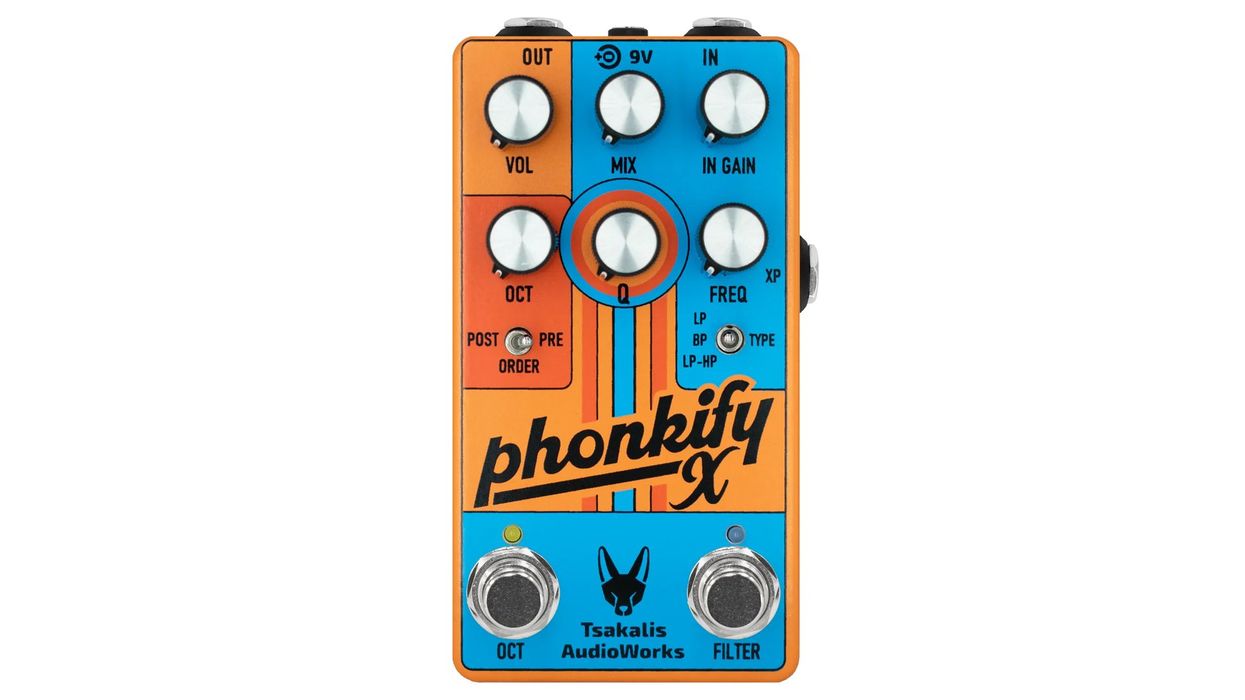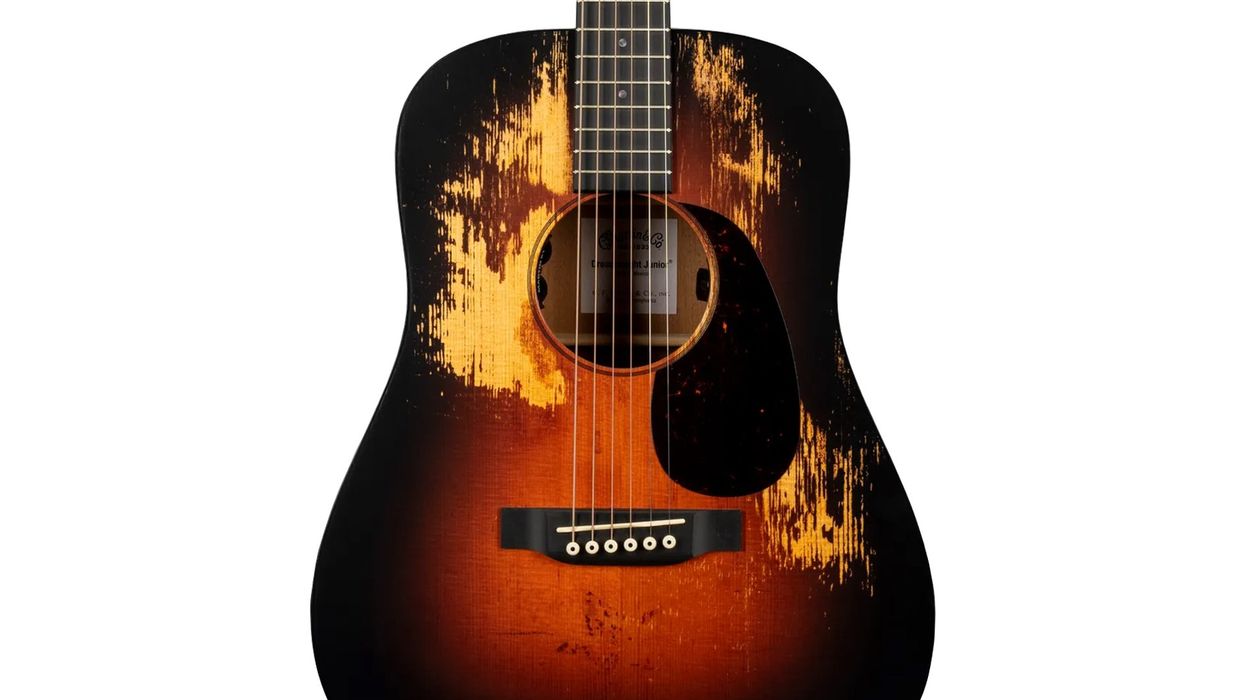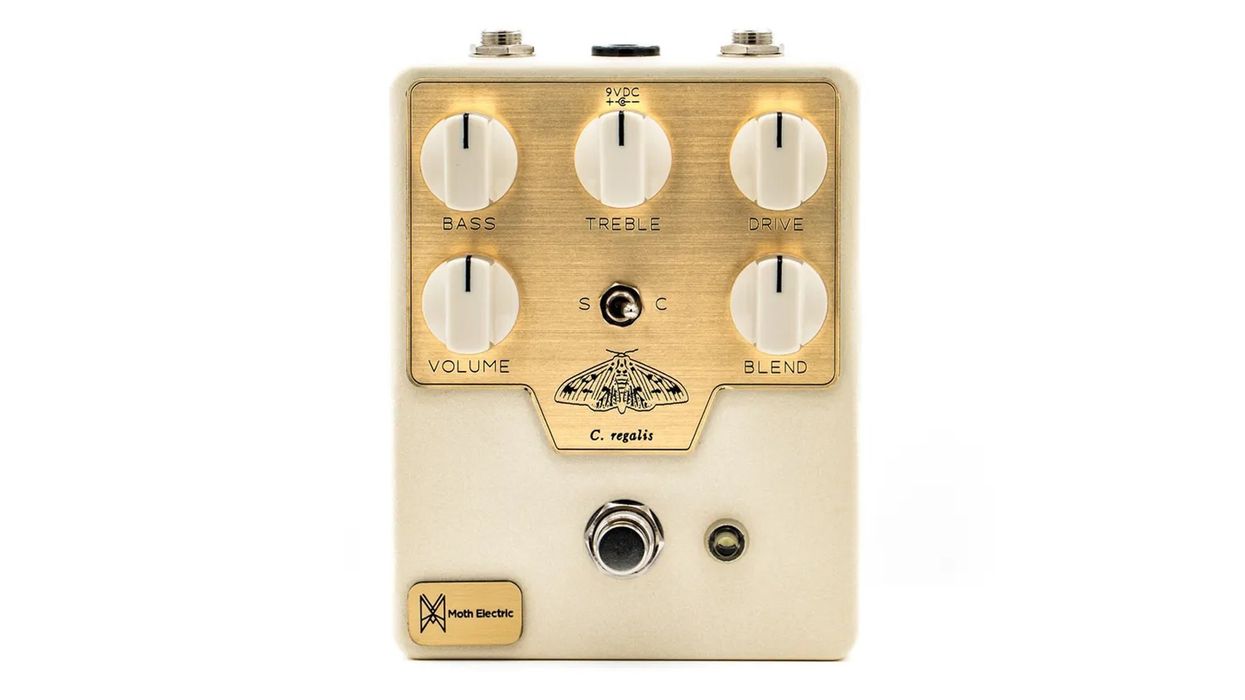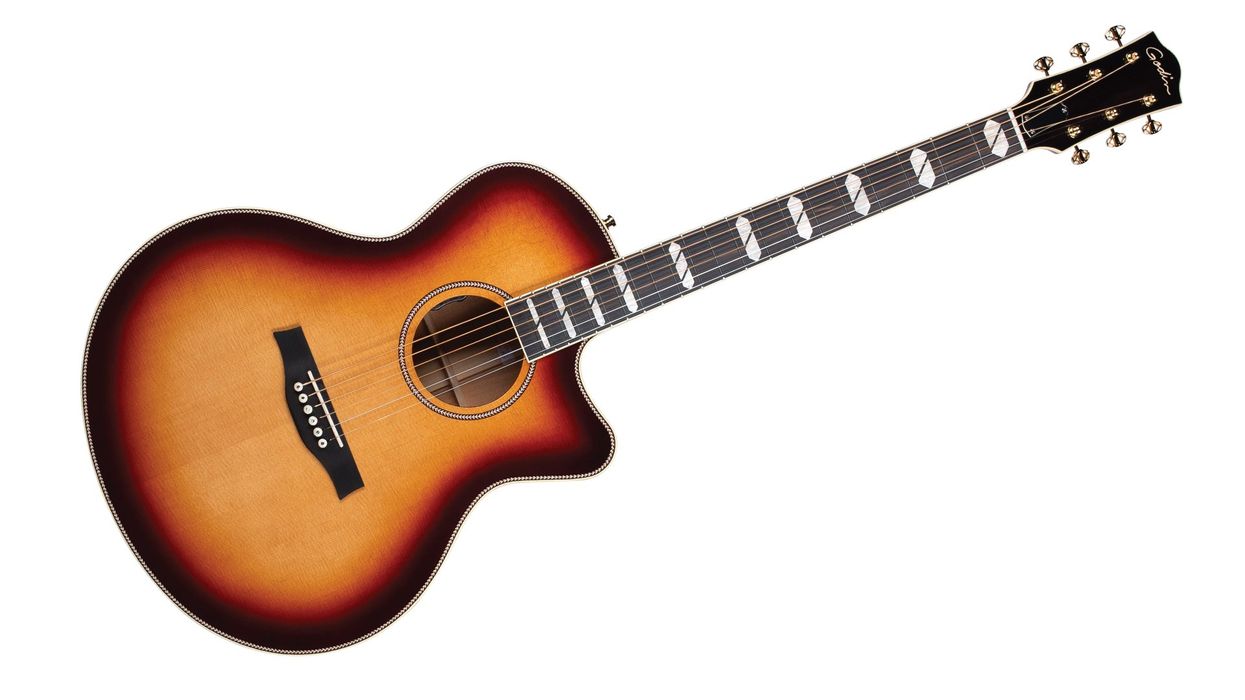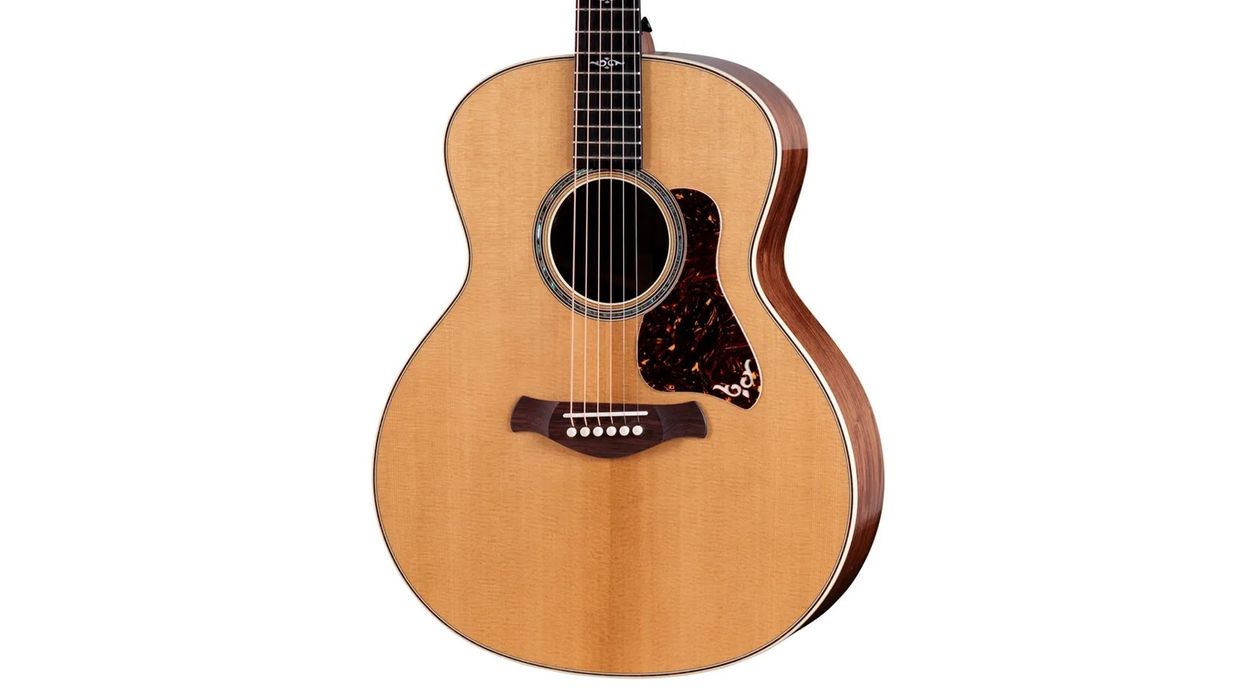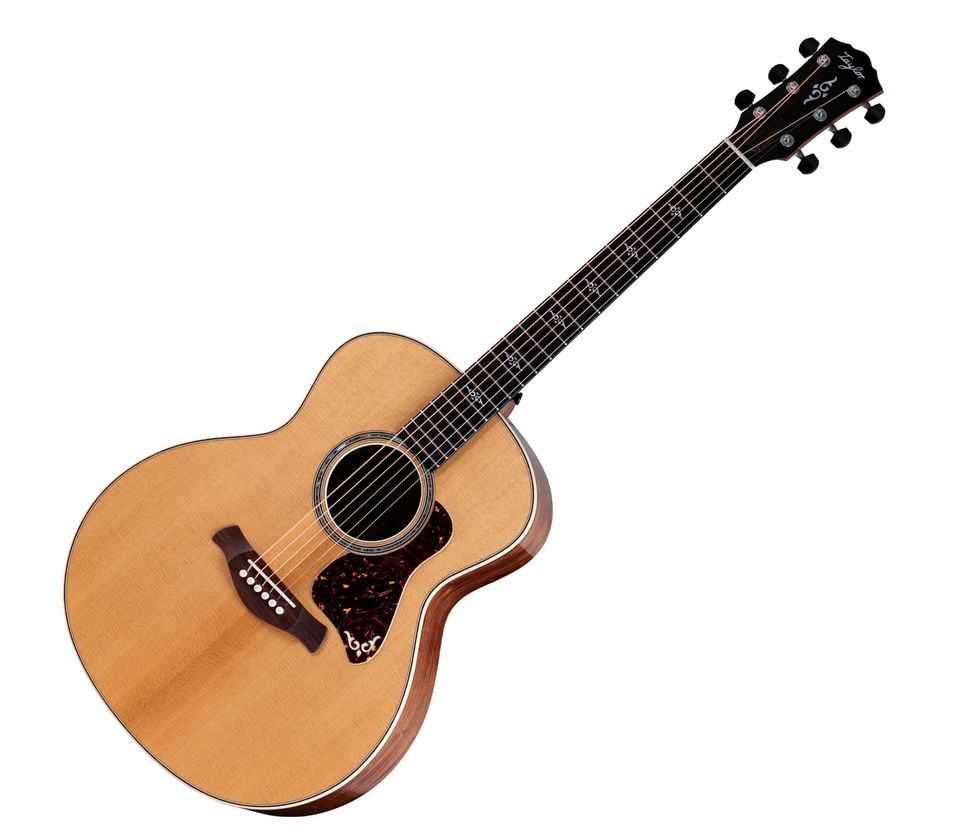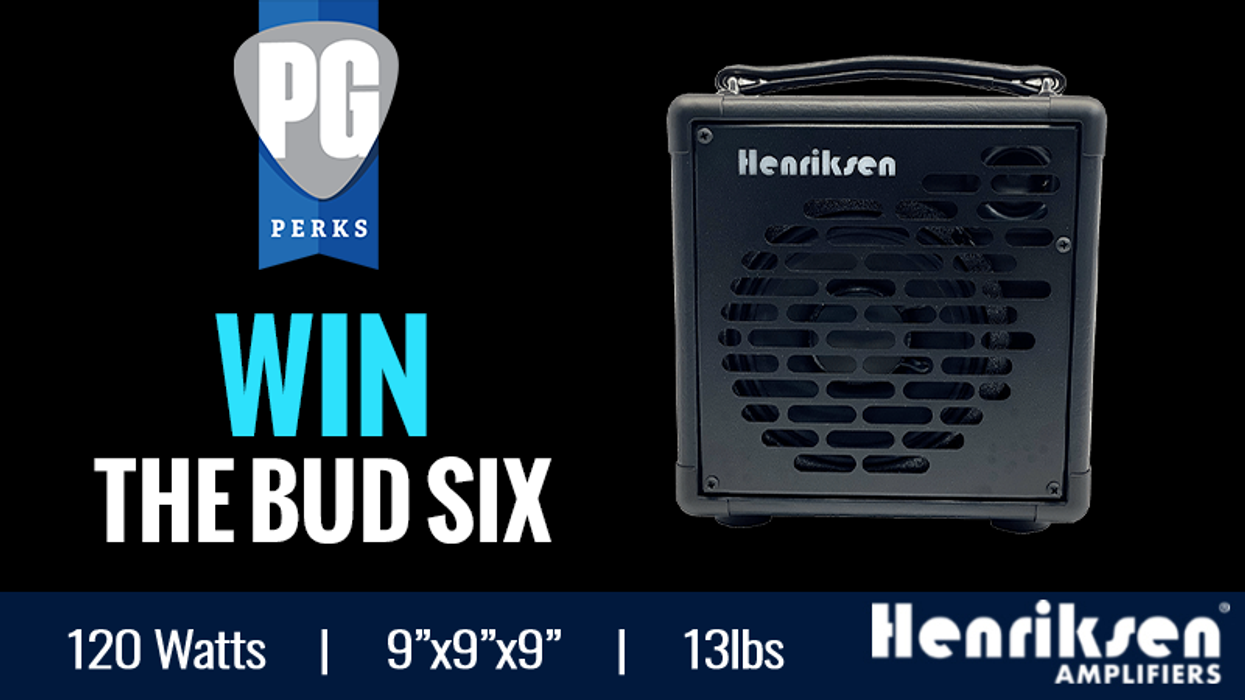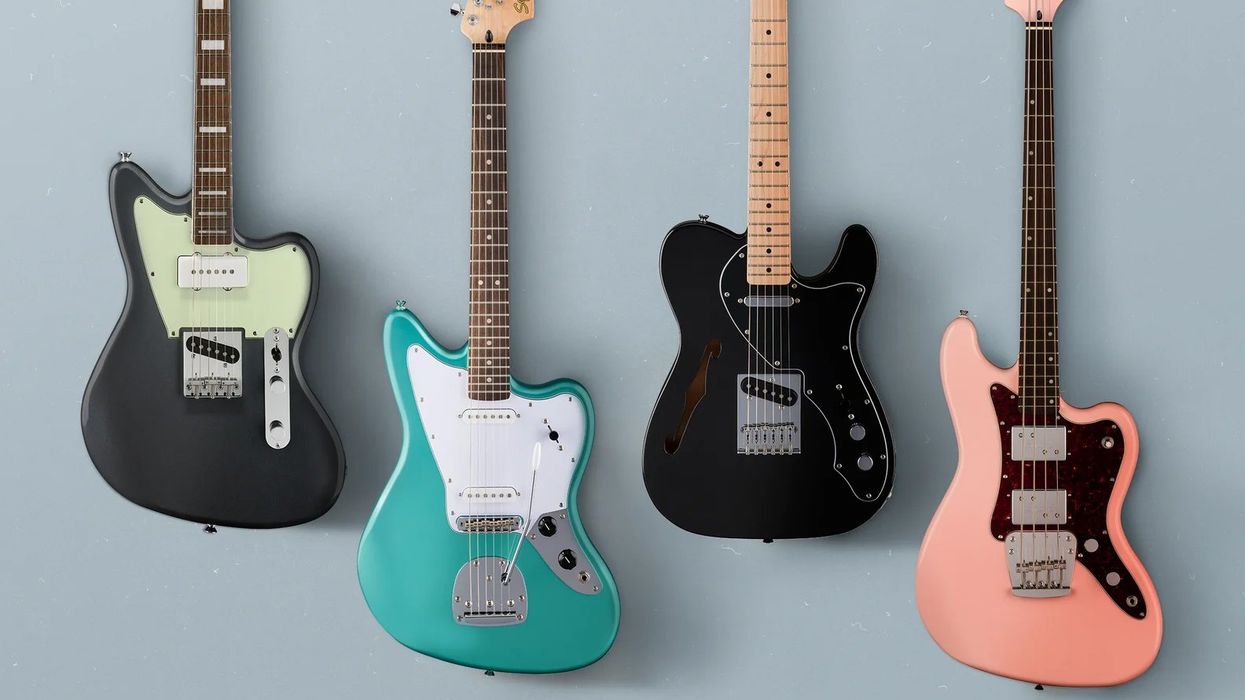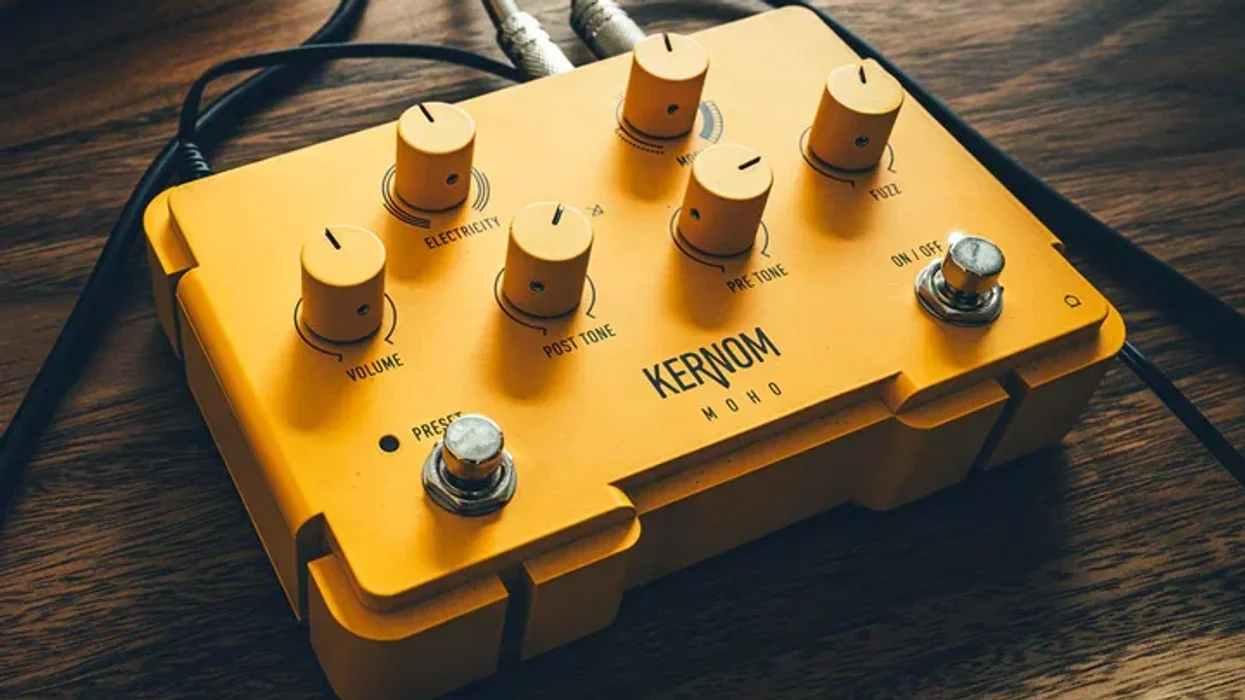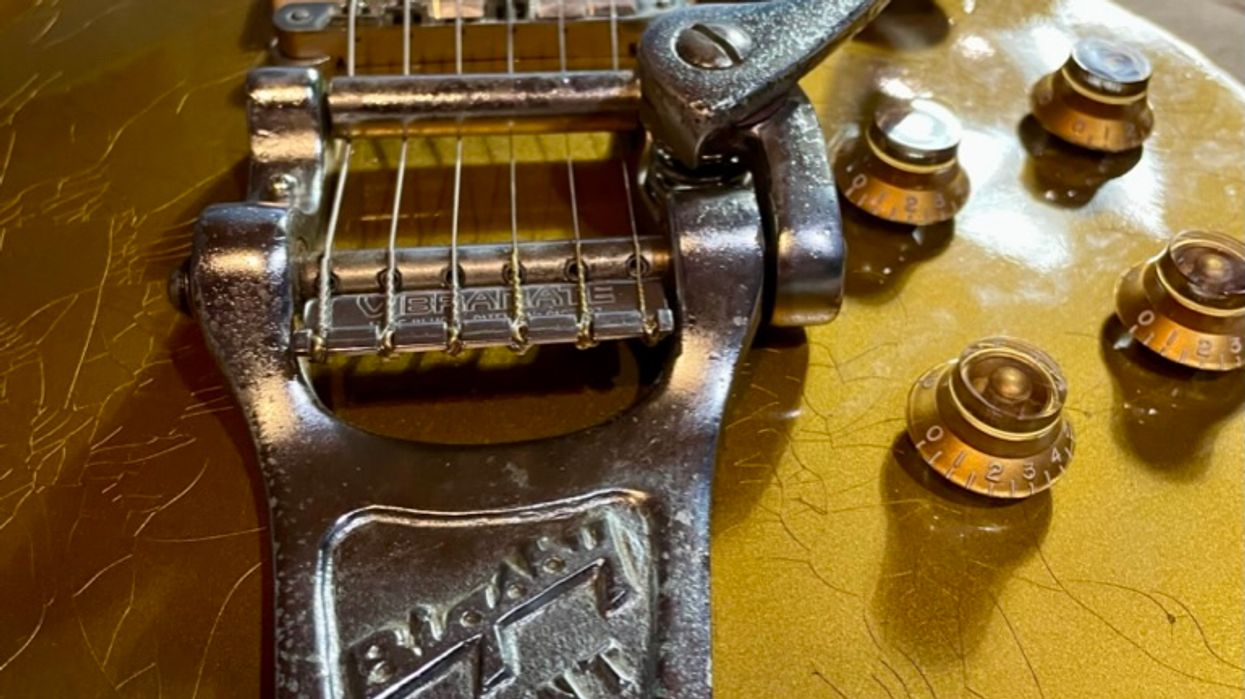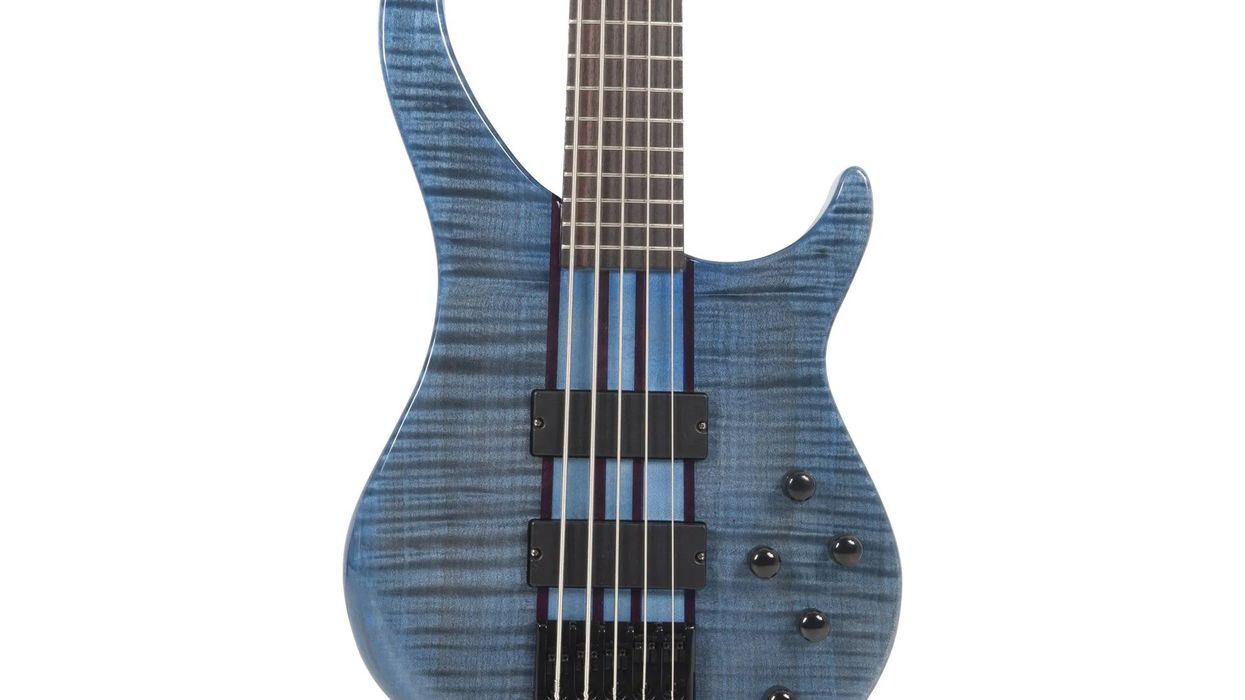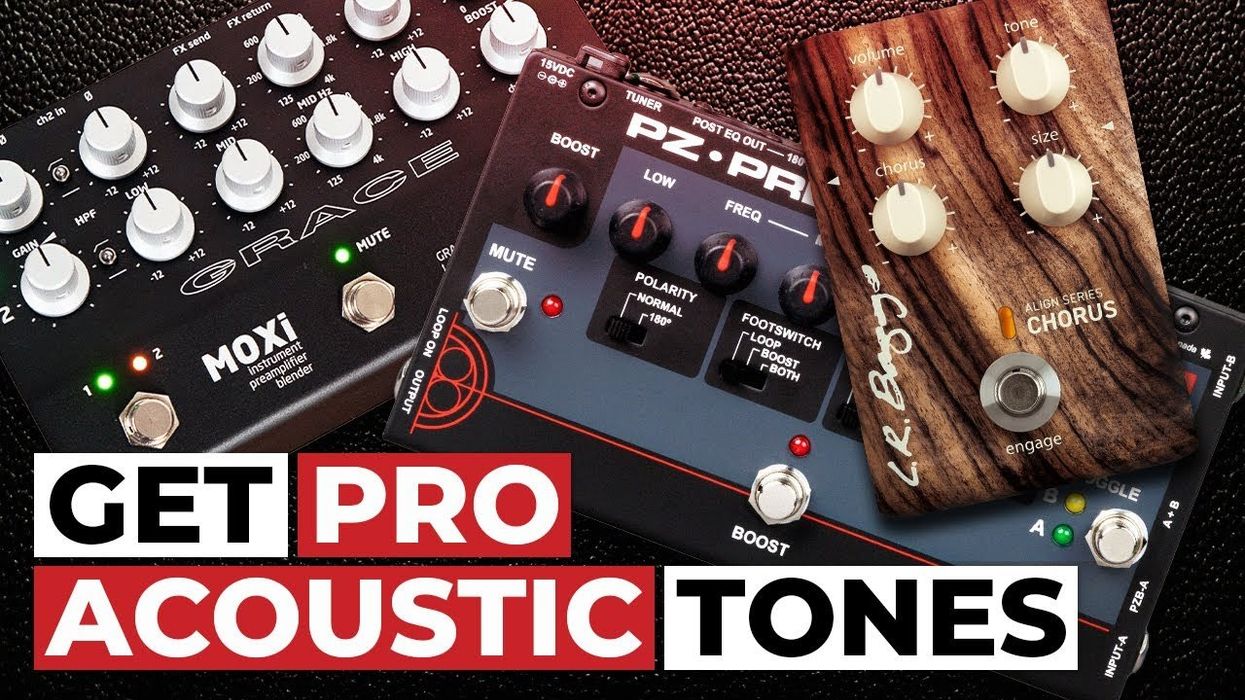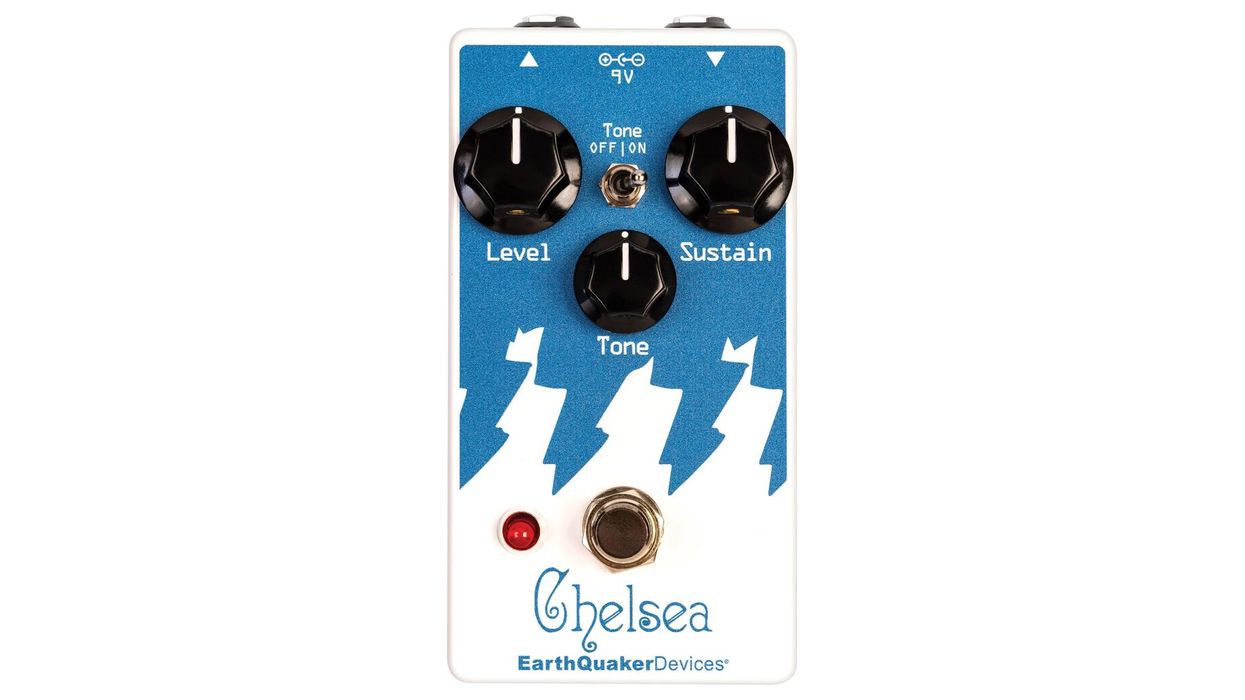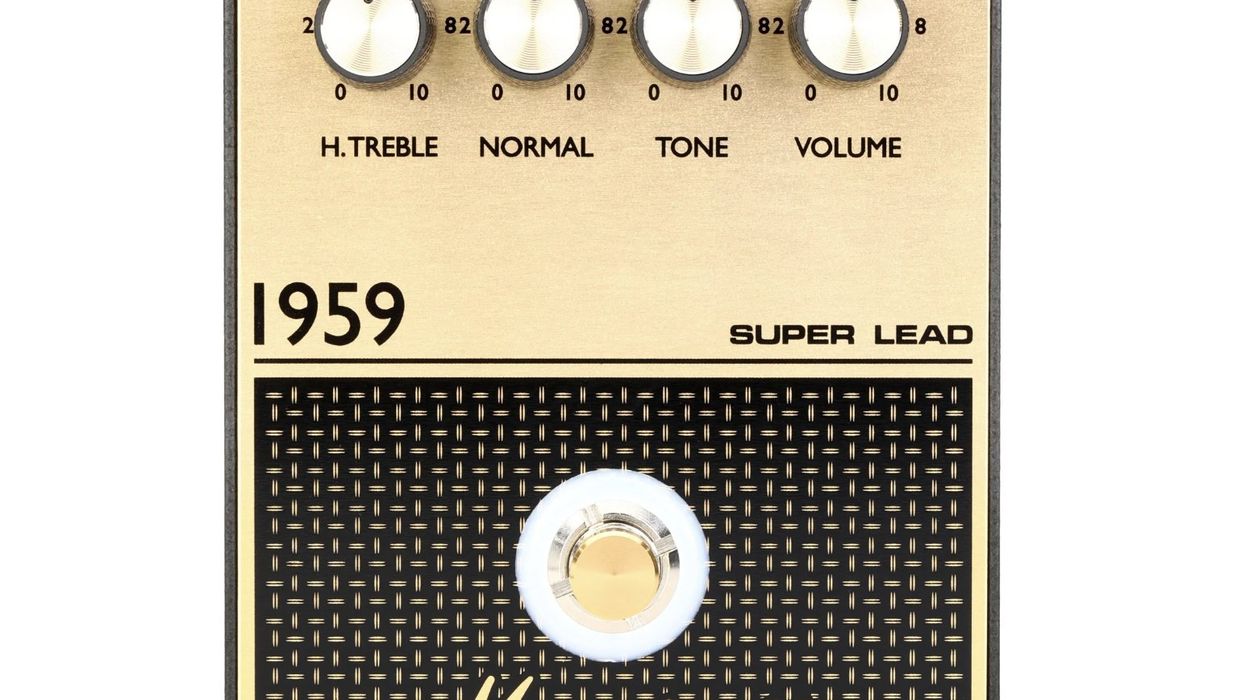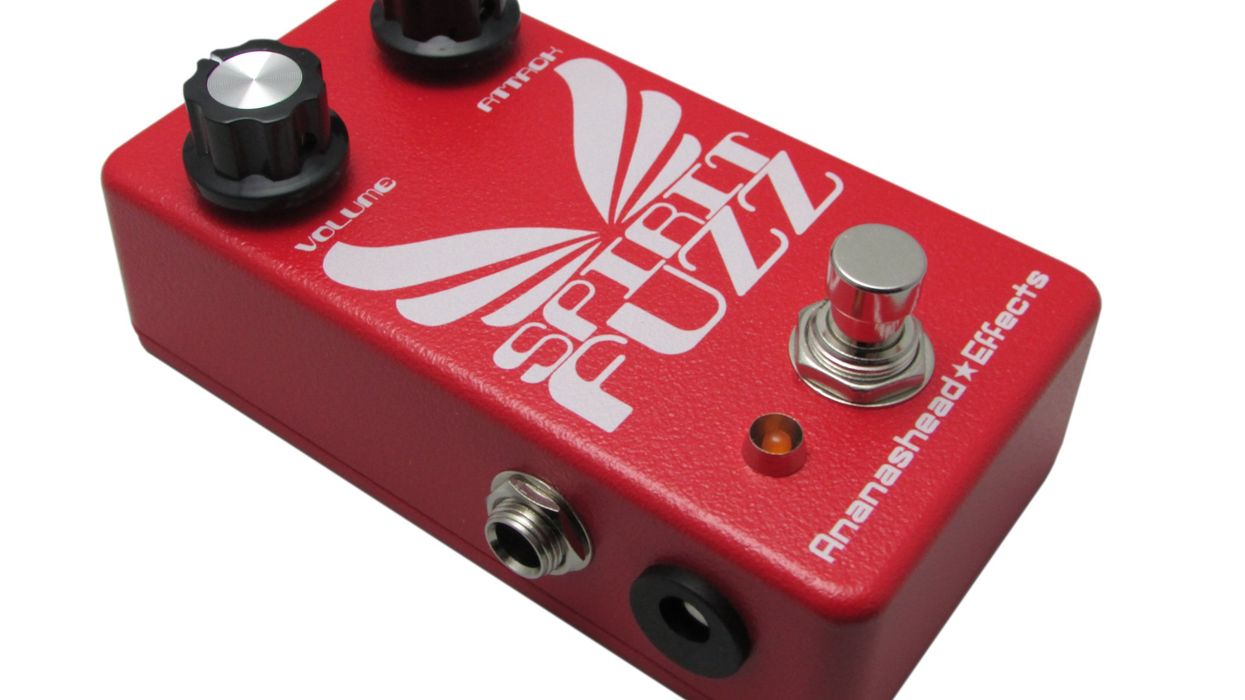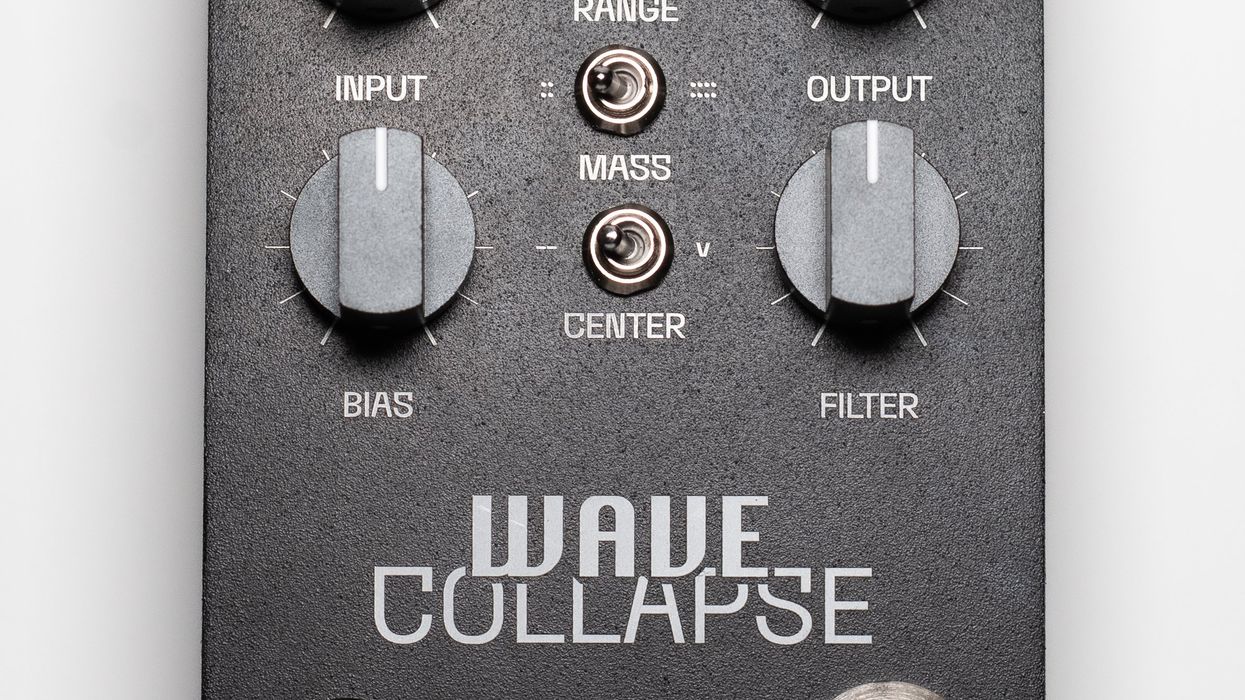Built in collaboration with Dr. Scientist's Neil Graham, Big Ear's Albie aims to pack late-'70s/early-'80s-style digital modulation and ambience into a multi-effector no bigger than your average 21st-century stompbox.
There are two knobs—a rotary control for selecting one of eight presets, and a blend control—and the momentary footswitch engages Graham-designed secondary settings (more on that in a sec). Each preset chain can include chorus, reverb, delay, even compression, though Big Ear leaves it to your ears to ascertain exactly what's going on with each. There are no internal trimpots or DIP switches.
Recorded using a Squier Tele with Curtis Novak Tele-V and JM-V pickups into a 1976 Fender Vibrolux Reverb miked with a Royer R-121, going into an Audient iD44 then into GarageBand with no EQ-ing, compression, or effects.
Clip 1: Both pickups. Albie bypassed, then engaged on prest 3 with blend at noon.
Clip 2: Neck pickup. Albie bypassed, then engaged on prest 6 with blend at noon, then with added echo and reverb from a SolidGoldFx Electroman MkII and an Anasounds Element.
Clip 3: Bridge pickup. Albie bypassed, then engaged on prest 7 with blend at 10:30.
Paired with a Tele and a silver-panel Vibrolux Reverb, the Albie definitely delivered on its promise to function as a sort of time machine to MTV's golden age. It's all about shimmering undulation and subtle slapback or echoes that hark to, say, the Cure, Suede, or even My Bloody Valentine. On their own, the presets might strike some as a bit staid, but pairing them with your favorite fuzz, reverb, and/or delay can help them blossom nicely, Meanwhile, Albie's secondary settings add a touch of modern weirdness—mainly in the form of more extreme modulation rates or longer decay times. And while many players, even those with traditional, no-nonsense tone tendencies, might find Albie's lack of parameter control limiting, minimalists who prize board real estate and hate twiddling knobs might deem it a dream machine.
Test Gear:
Squier Tele with Curtis Novak Tele-V and JM-V pickups, '76 Fender Vibrolux Reverb, Jordan Fuzztite, SolidGoldFx Electroman MkII, Anasounds Element.


